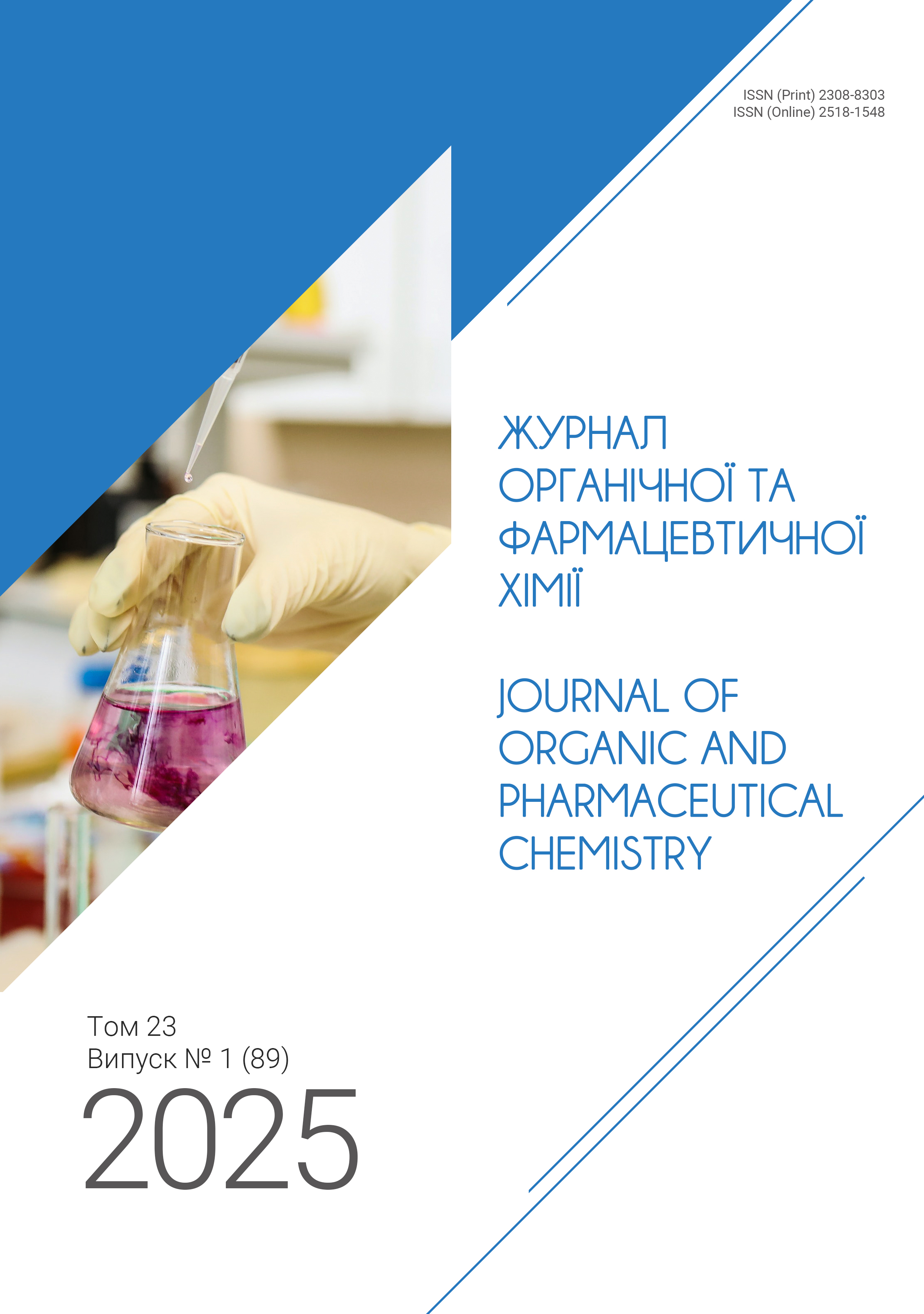Hydrolysis of Difluorocyclopropenes: the Role of the Cyclopropenyl Cation and the Effects of Substituents
DOI:
https://doi.org/10.24959/ophcj.25.324913Keywords:
difluorocyclopropenes, cyclopropenyl cation, hydrolysisAbstract
Monosubstituted gem-difluorocyclopropenes undergo hydrolysis yielding cyclopropenones and acrylic acid derivatives. Herein, we investigate the reaction routes of hydrolysis for both aromatic and alkyl derivatives. The study supports the idea that the formation of a cyclopropenyl cation controls the reactivity of gem-difluorocyclopropenes, and aromatic substituents accelerate the hydrolysis via the resonance stabilization. Reaction conditions, including the solvent composition and temperature, significantly affect the conversion and the product selectivity. This information facilitates the preparative synthesis and improves understanding of the fluorinated cyclopropene reactivity.
Supporting Agency
- The work was funded by the internal Enamine grant and the grant of the Ministry of Education and Science of Ukraine (grant number 0123U102102).
Downloads
References
- Wang, X.; Wang, F.; Huang, F.; Ni, C.; Hu, J. Deoxyfluorination of Carboxylic Acids with CpFluor: Access to Acyl Fluorides and Amides. Org. Lett. 2021, 23 (5), 1764 – 1768. https://doi.org/10.1021/acs.orglett.1c00190.
 |
|  |
| 
- Nechaev, I. V.; Cherkaev, G. V.; Boev, N. V.; Solyev, P. N. Three-Component Reaction of 3,3-Difluorocyclopropenes, s-Tetrazines, and (Benzo) Pyridines. J. Org. Chem. 2021, 86 (1), 1037 – 1052. https://doi.org/10.1021/acs.joc.0c02292.
 |
|  |
| 
- Nechaev, I. V.; Cherkaev, G. V.; Solyev, P. N.; Boev, N. V. Synthesis and Aerobic Dehydrogenation of Indolizin-1-Ol Derivatives. J. Org. Chem. 2021, 86 (5), 4220 – 4235. https://doi.org/10.1021/acs.joc.0c03046.
 |
|  |
| 
- Nosik, P. S.; Pashko, M. O.; Poturai, A. S.; Kvasha, D. A.; Pashenko, A. E.; Rozhenko, A. B.; Suikov, S.; Volochnyuk, D. M.; Ryabukhin, S. V.; Yagupolskii, Y. L. Monosubstituted 3,3-Difluorocyclopropenes as Bench-Stable Reagents: Scope and Limitations. Eur. J. Org. Chem. 2021, 2021 (47), 6604 – 6615. https://doi.org/10.1002/ejoc.202100921.
 |
| 
- Li, L.; Ni, C.; Wang, F.; Hu, J. Deoxyfluorination of Alcohols with 3,3-Difluoro-1,2-Diarylcyclopropenes. Nat. Commun. 2016, 7 (1), 13320. https://doi.org/10.1038/ncomms13320.
 |
|  |
| 
- Law, D. C. F.; Tobey, S. W.; West, R. Fluorinated Cyclopropenes and Cyclopropenium Ions. J. Org. Chem. 1973, 38 (4), 768 – 773. https://doi.org/10.1021/jo00944a032.
 |
| 
- Breslow, R.; Dowd, P. The Dimerization of Triphenylcyclopropene. J. Am. Chem. Soc. 1963, 85 (18), 2729–2735. https://doi.org/10.1021/ja00901a012.

- Smart, B. E. Fluorinated Cyclopropenyl Methyl Ethers. New Stable Cyclopropenium Cations. J. Org. Chem. 1976, 41 (14), 2377 – 2379. https://doi.org/10.1021/jo00876a005.
 |
| 
- Dolbier, W. R.; Battiste, M. A. Structure, Synthesis, and Chemical Reactions of Fluorinated Cyclopropanes and Cyclopropenes. Chem. Rev. 2003, 103 (4), 1071 – 1098. https://doi.org/10.1021/cr010023b.
 |
|  |
| 
Downloads
Additional Files
Published
How to Cite
Issue
Section
License
Copyright (c) 2025 National University of Pharmacy

This work is licensed under a Creative Commons Attribution 4.0 International License.
Authors publishing their works in the Journal of Organic and Pharmaceutical Chemistry agree with the following terms:
1. Authors retain copyright and grant the journal the right of the first publication of the work under Creative Commons Attribution License allowing everyone to distribute and re-use the published material if proper citation of the original publication is given.
2. Authors are able to enter into separate, additional contractual arrangements for the non-exclusive distribution of the journal’s published version of the work (e.g., post it to an institutional repository or publish it in a book) providing proper citation of the original publication.
3. Authors are permitted and encouraged to post their work online (e.g. in institutional repositories or on authors’ personal websites) prior to and during the submission process, as it can lead to productive exchanges, as well as earlier and greater citation of published work (see The Effect of Open Access).















